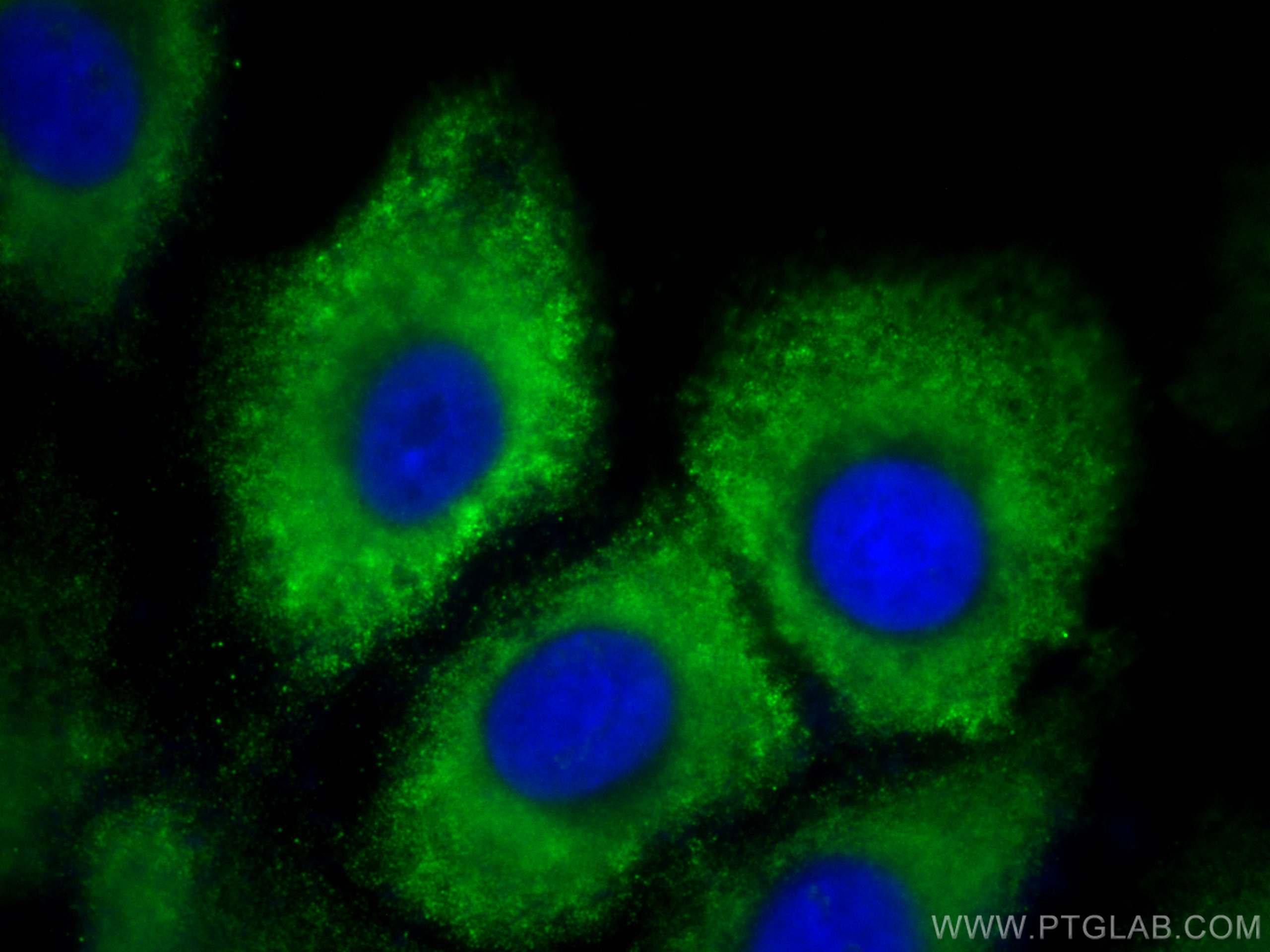Tested Applications
| Positive IF/ICC detected in | A549 cells |
Recommended dilution
| Application | Dilution |
|---|---|
| Immunofluorescence (IF)/ICC | IF/ICC : 1:50-1:500 |
| It is recommended that this reagent should be titrated in each testing system to obtain optimal results. | |
| Sample-dependent, Check data in validation data gallery. | |
Product Information
CL488-68114 targets DCT in IF/ICC applications and shows reactivity with human, mouse, pig samples.
| Tested Reactivity | human, mouse, pig |
| Host / Isotype | Mouse / IgG1 |
| Class | Monoclonal |
| Type | Antibody |
| Immunogen |
CatNo: Ag26165 Product name: Recombinant human DCT protein Source: e coli.-derived, PET28a Tag: 6*His Domain: 1-350 aa of BC028311 Sequence: MSPLWWGFLLSCLGCKILPGAQGQFPRVCMTVDSLVNKECCPRLGAESANVCGSQQGRGQCTEVRADTRPWSGPYILRNQDDRELWPRKFFHRTCKCTGNFAGYNCGDCKFGWTGPNCERKKPPVIRQNIHSLSPQEREQFLGALDLAKKRVHPDYVITTQHWLGLLGPNGTQPQFANCSVYDFFVWLHYYSVRDTLLGPGRPYRAIDFSHQGPAFVTWHRYHLLCLERDLQRLIGNESFALPYWNFATGRNECDVCTDQLFGAARPDDPTLISRNSRFSSWETVCDSLDDYNHLVTLCNGTYEGLLRRNQMGRNSMKLPTLKDIRDCLSLQKFDNPPFFQNSTFSFRNA Predict reactive species |
| Full Name | dopachrome tautomerase (dopachrome delta-isomerase, tyrosine-related protein 2) |
| Calculated Molecular Weight | 519 aa, 59 kDa |
| Observed Molecular Weight | 55-63 kDa |
| GenBank Accession Number | BC028311 |
| Gene Symbol | DCT |
| Gene ID (NCBI) | 1638 |
| RRID | AB_3672970 |
| Conjugate | CoraLite® Plus 488 Fluorescent Dye |
| Excitation/Emission Maxima Wavelengths | 493 nm / 522 nm |
| Form | Liquid |
| Purification Method | Protein G purification |
| UNIPROT ID | P40126 |
| Storage Buffer | PBS with 50% glycerol, 0.05% Proclin300, 0.5% BSA, pH 7.3. |
| Storage Conditions | Store at -20°C. Avoid exposure to light. Stable for one year after shipment. Aliquoting is unnecessary for -20oC storage. |
Background Information
DCT(L-dopachrome Delta-isomerase) is also named as TYRP2,TRP2 and belongs to the tyrosinase family.human TYRP2 protein has 83% identity and 90% similarity to the mouse sequence and has all the structural characteristics of the tyrosinase protein family, including a signal peptide, 15 conserved cysteine residues, 2 copper-binding domains, and a C-terminal membrane-spanning region(PMID:8206391).
Protocols
| Product Specific Protocols | |
|---|---|
| IF protocol for CL Plus 488 DCT antibody CL488-68114 | Download protocol |
| Standard Protocols | |
|---|---|
| Click here to view our Standard Protocols |




